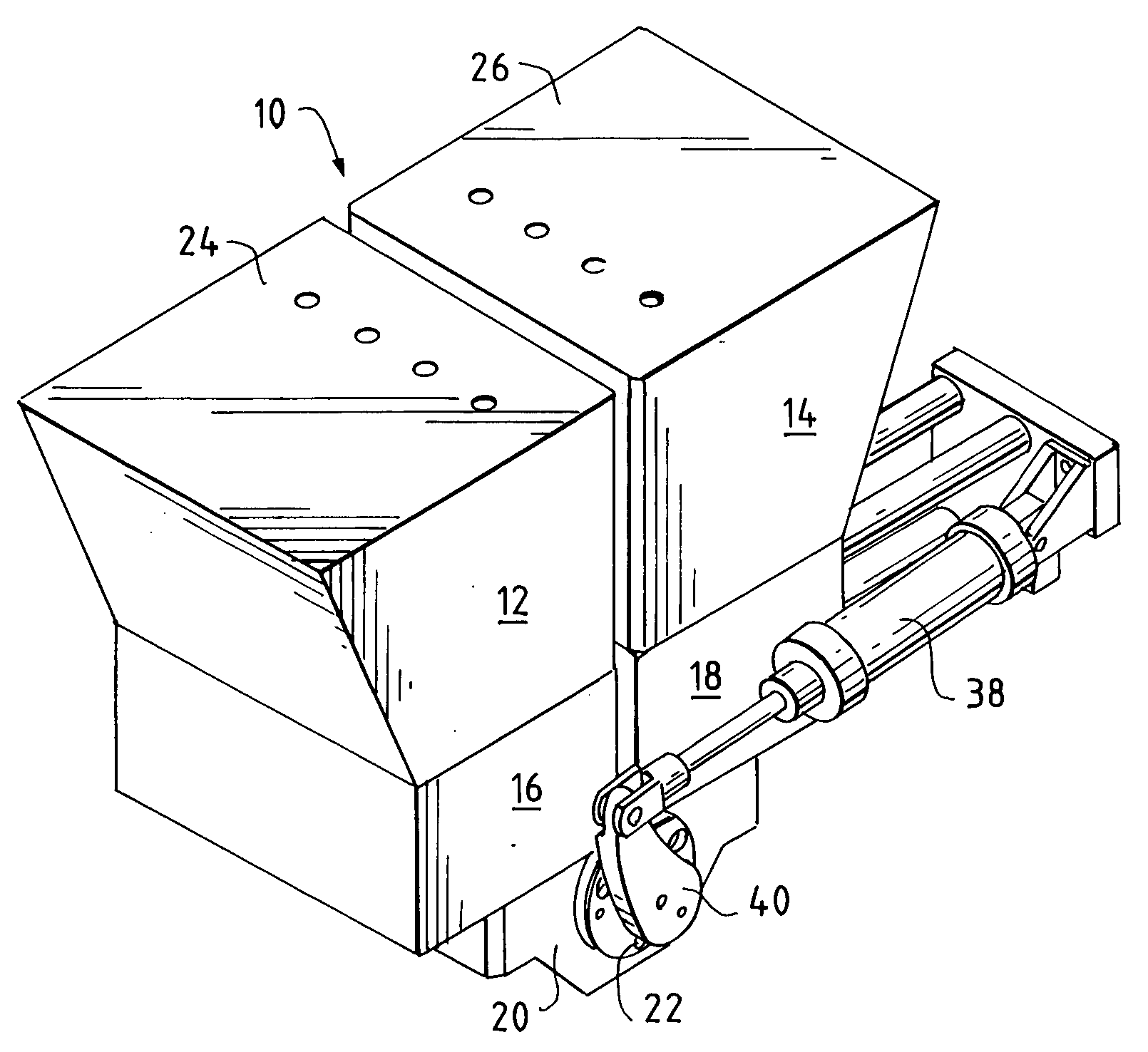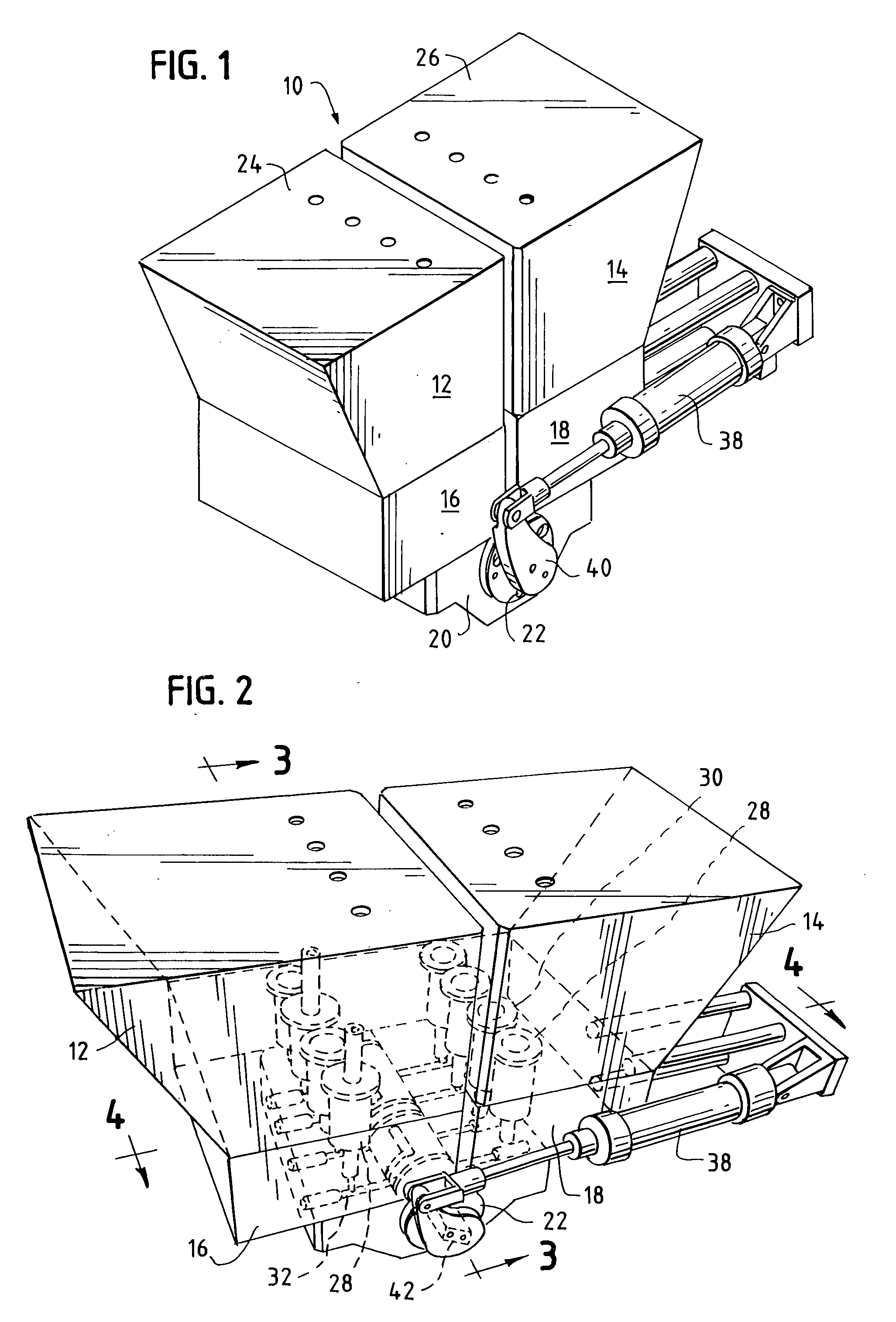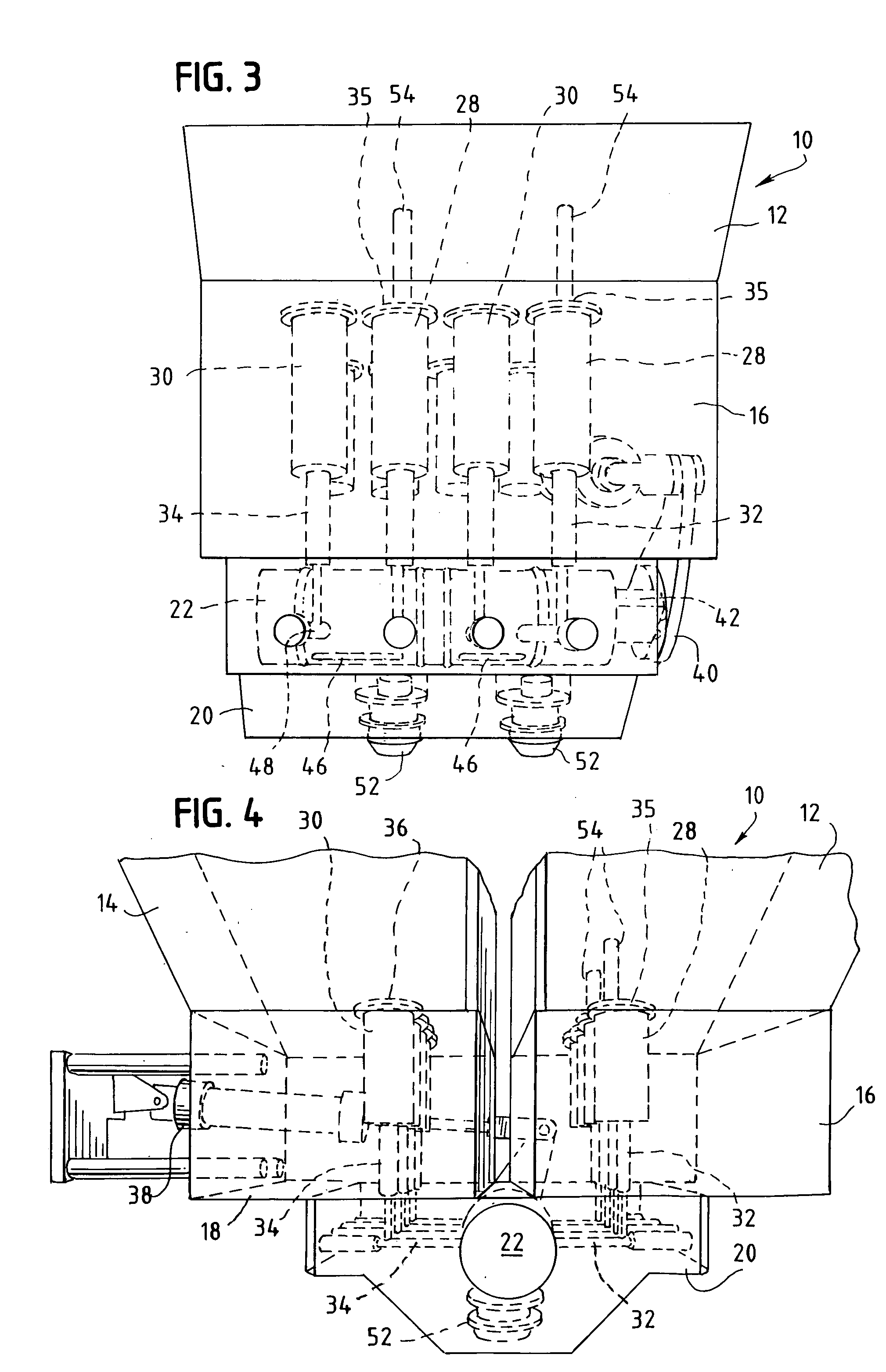Confectionery depositing apparatus and product and method of producing same
a depositing apparatus and confectionery technology, applied in confectionery, cocoa, food shaping and other directions, can solve the problems of inability to meet the requirements of gravity-feed arrangement, etc., to achieve the effect of eliminating dwell time, low weight variance, and low accuracy of current system
- Summary
- Abstract
- Description
- Claims
- Application Information
AI Technical Summary
Benefits of technology
Problems solved by technology
Method used
Image
Examples
examples
[0061]
TABLE 1Deposit Amount Based on Piston Diameter and Stroke LengthConfectionery Density (hot mass)1.27gr / cm3Piston Diameter 6.00 mm.VOLUMESTROKE (mm)SECTION (mm2)(cm3)WEIGHT (g)12.0028.2740.3390.43130.0028.2740.8481.077Piston Diameter 7.00 mm.VOLUMESTROKE (mm)SECTION (mm2)(cm3)WEIGHT (g)12.0038.4850.4620.58730.0038.4851.1551.466Piston Diameter 8.00 mm.VOLUMESTROKE (mm)SECTION (mm2)(cm3)WEIGHT (g)12.0028.2740.3390.43130.0050.2651.5081.915Piston Diameter 9.00 mm.VOLUMESTROKE (mm)SECTION (mm2)(cm3)WEIGHT (g)12.0063.6170.7630.97030.0063.6171.9092.424Piston Diameter 10.00 mm.VOLUMESTROKE (mm)SECTION (mm2)(cm3)WEIGHT (g)12.0078.5400.9421.19730.0078.5402.3562.992Piston Diameter 11.00 mm.VOLUMESTROKE (mm)SECTION (mm2)(cm3)WEIGHT (g)12.0095.0331.1401.44830.0095.0332.8513.621Piston Diameter 12.00 mm.VOLUMESTROKE (mm)SECTION (mm2)(cm3)WEIGHT (g)12.00113.0971.3571.72430.00113.0973.3934.309Piston Diameter 13.00 mm.VOLUMESTROKE (mm)SECTION (mm2)(cm3)WEIGHT (g)12.00132.7321.5932.02330.00132.73...
PUM
 Login to View More
Login to View More Abstract
Description
Claims
Application Information
 Login to View More
Login to View More - R&D
- Intellectual Property
- Life Sciences
- Materials
- Tech Scout
- Unparalleled Data Quality
- Higher Quality Content
- 60% Fewer Hallucinations
Browse by: Latest US Patents, China's latest patents, Technical Efficacy Thesaurus, Application Domain, Technology Topic, Popular Technical Reports.
© 2025 PatSnap. All rights reserved.Legal|Privacy policy|Modern Slavery Act Transparency Statement|Sitemap|About US| Contact US: help@patsnap.com



